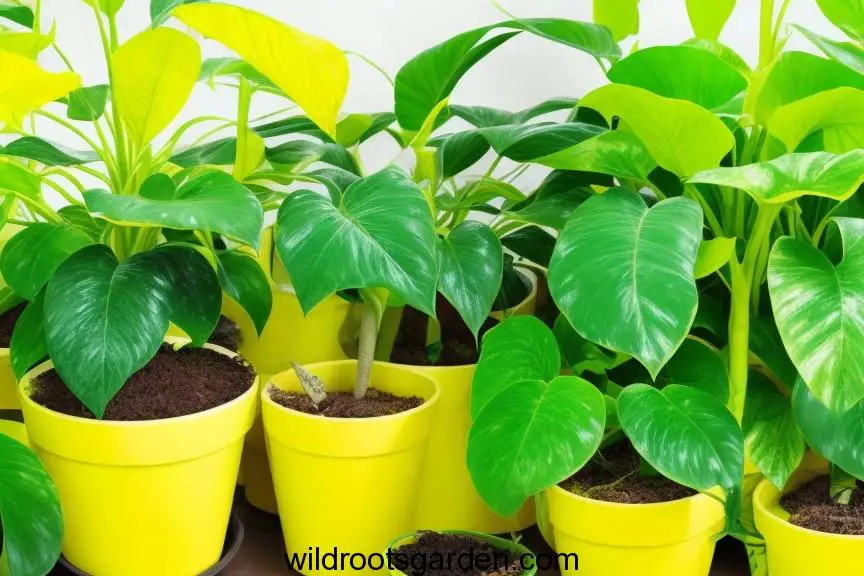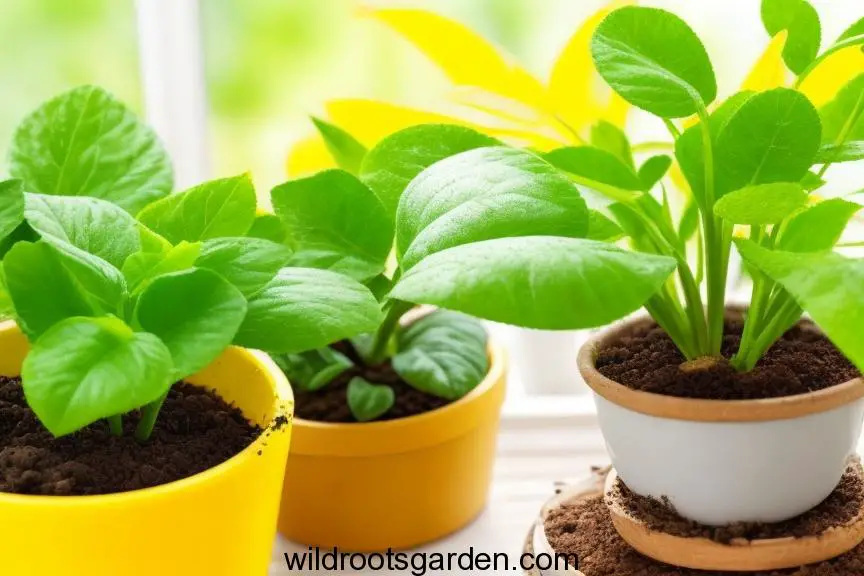Yellow Substances in Your Houseplant Soil. The unexpected truth about the yellow components in your houseplant soil is that they are not dangerous. The yellow material is probably either Fuligo septica, a yellow slime mold, or Leucocoprinus Birnbaum, a yellow houseplant mushroom. Both of these creatures are safe for people and animals, and they actually improve soil quality by decomposing organic debris and supplying nutrients to your plants. If the yellow stuff, however, is ugly, you can get rid of it by carefully scraping it from the soil’s surface.
Our houses seem calm and warm because of the energy and vibrancy that houseplants add to the space. The question is, what should you do if you find yellow stuff in the soil of your cherished houseplants? Yellow Chemicals in Your Houseplant Soil: The Shocking Mystery! reveals the mystery’s hidden meaning. In this in-depth guide, we’ll explore the causes of these yellow compounds, how they affect your plants, and the steps you can take to make sure your plants survive. Join me as we go off on this educational quest to improve your green haven!
The Surprising Secret Behind Yellow Substances in Your Houseplant Soil!
Imagine that you give your indoor plants the attention they require in terms of watering, sunlight exposure, and soil drainage. Yet as you examine your plant, you detect an enigmatic yellow material on the top of the soil. Why might this be? Yellow Chemicals in Your Houseplant Soil: The Shocking Mystery! the importance of comprehending the numerous elements that contribute to this phenomenon.

Nutrient Imbalance: The Culprit Revealed
Unbalanced nutrient levels are one of the main causes of yellow compounds in houseplant soil. To thrive, plants need a precise balance of nutrients, including nitrogen, phosphorus, and potassium. Overuse of fertilizer or poor nutrient uptake might result in an oversupply of some nutrients. This surplus might appear in the soil as yellow compounds, which point to an underlying nutritional imbalance.
Watering Woes: The Unseen Connection
Yellow particles in your houseplant soil might also be caused by improper watering techniques. Overwatering causes soggy roots, which deplete the soil’s oxygen supply. An anaerobic environment promotes the development of fungi and bacteria, which can lead to growths on the soil’s surface that are yellow in color. These growths not only impair the aesthetics of the soil but also the root health of your plant.
Organic Matter Breakdown: Nature’s Process
In the soil, a natural cycle of organic matter breakdown takes place when plants develop and shed their leaves. The breakdown of dead plant matter by microbes speeds up this degradation. Yet, if the process goes slowly, the organic matter might build up and yellow substances might start to show. These often-harmless chemicals serve as indicators of the ongoing breakdown process.

Pest Infestation: The Uninvited Guests
Pests can permeate the soil of your houseplant and establish a sanctuary for themselves, including aphids and fungus gnats. These creatures not only consume the roots of your plant, but they also sometimes leave behind yellowish excrement. These excretions contain too many nutrients, which encourage the development of molds and result in yellow materials on the soil’s surface.
FAQs
Q: Can I just scrape off the yellow substances from the soil’s surface?
A: While scraping off the yellow substances might offer a temporary solution, it’s essential to address the underlying causes to ensure your plants’ long-term health.
Q: Are yellow substances always harmful to my plants?
A: Not necessarily. Some yellow substances are harmless and part of the natural decomposition process. However, it’s crucial to identify the cause to determine if any action is required.
Q: Can I use chemical pesticides to eliminate pests in my houseplant soil?
A: It’s recommended to opt for natural pest control methods to avoid harming your plants. Neem oil, insecticidal soap, and sticky traps are effective alternatives.
Q: Is repotting my plant a solution to address yellow substances?
A: Repotting can help if the root system is severely affected, but it’s crucial to address watering and feeding practices to prevent a recurrence.
Q: Should I adjust my watering frequency for all my houseplants?
A: Different plants have varying water requirements. Research each plant’s specific needs to ensure you’re providing the appropriate amount of water.
Q: Can I prevent yellow substances by not using fertilizer at all?
Fertilizers are essential for providing nutrients to plants. Instead of avoiding them, focus on using a balanced fertilizer and following the recommended application guidelines.
Unveiling The Surprising Secret Behind Yellow Substances in Your Houseplant Soil! empowers you to create a thriving and picturesque indoor garden. By understanding the underlying factors contributing to yellow substances, you can take proactive steps to ensure your plants’ vitality. From nutrient management to pest control, this guide equips you with the knowledge needed to address and prevent yellow substances, fostering a flourishing haven of greenery in your home.


